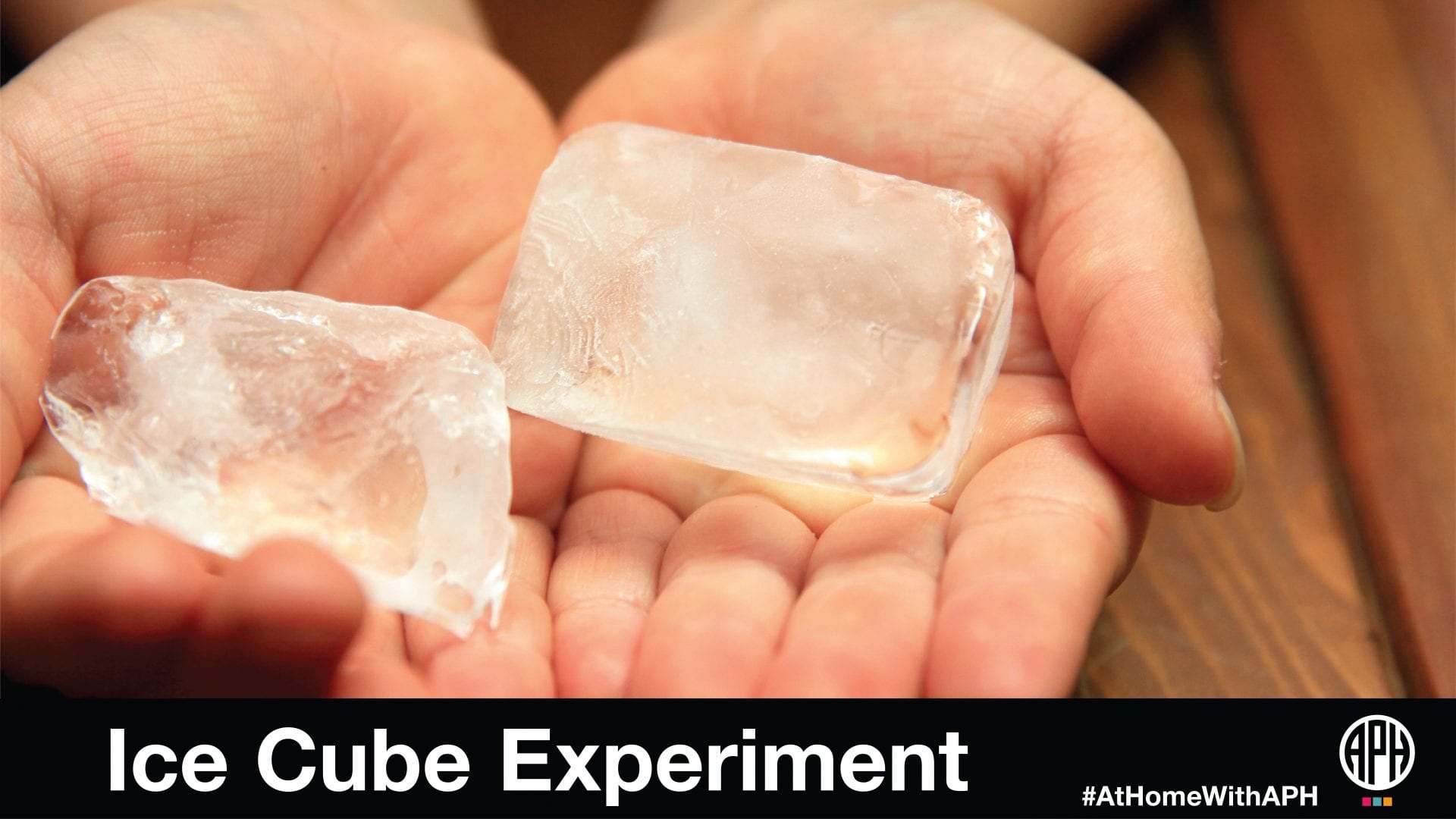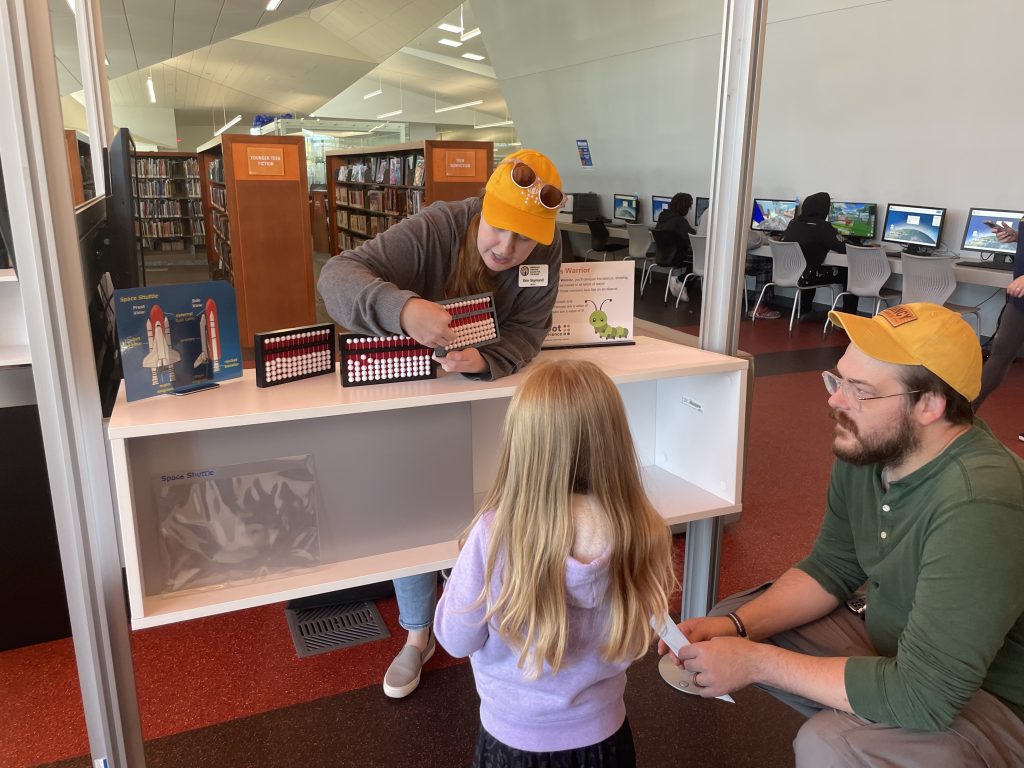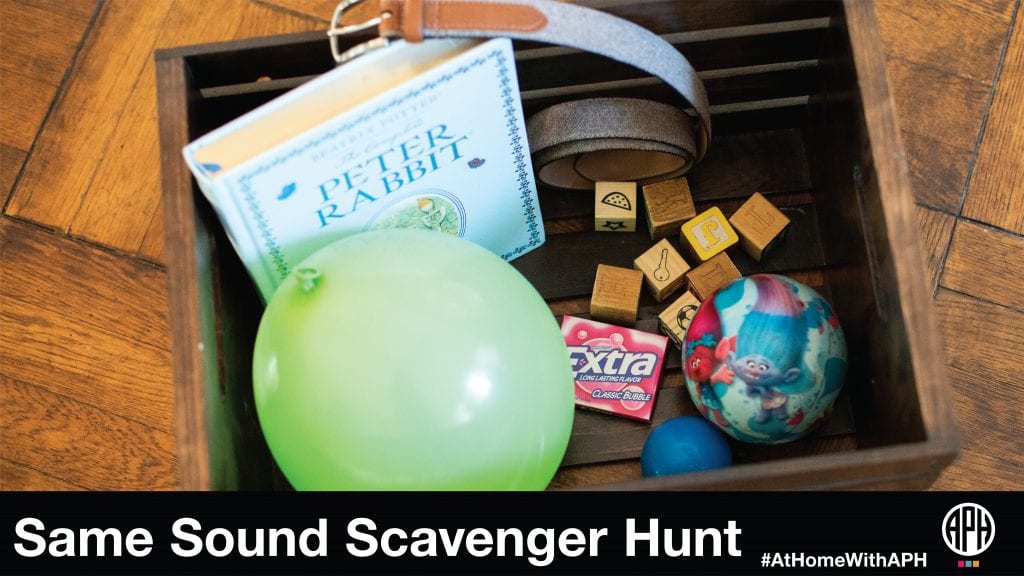Orders placed between March 27 – 31 will not ship until April 1 due to APH warehouse closure for inventory.
CloseWhich Ice Cube Melts Faster?

Looking for a kid-friendly science experiment to do at home with your child? With some simple ingredients found around the house, you can perform a fun hands-on experiment that’s a great way to enjoy science. This will take about 30-40 minutes total.
Here’s what you’ll need:
- Two small ice cubes of the same size
- Two paper cups (or other shallow cups)
- Tablespoon of table salt
- Towel, tissue, or wipe (optional)
Ice Cube Experiment
- Have the child take two small ice cubes of the same size out of a freezer and place each in its own paper cup.
- Help the child sprinkle a tablespoon of salt over one ice cube. Ask “Which ice cube do you think will melt faster?”
- Ask the child to check the ice cubes about every 10 minutes to see how they are melting. Depending on how old your child is, you can set a timer or ask the child to keep track of the time.
Tip: Be careful not to accidentally contaminate the unsalted ice cube with salt! Have the child use a different hand to touch each ice cube when comparing their sizes, and wash his or her hands or provide a towel, tissue, or wipe after each observation to clean his/her hands.
By comparing the size of both ice cubes, after a few checks your child should conclude that the ice cube covered with salt is melting faster. Talk about his/her observations and the answer to the “which ice cube will melt faster” question.
Real-World Connection
Don’t let the exploration and discovery stop there! As a follow-up, talk about how some places, or your hometown, get snow and ice in the winter. When snow and ice are on the roads and sidewalks, they can be slippery and people could fall. People often put salt on the slippery sidewalks and roads. Ask your child why people would do this (to melt the snow and ice). Help him/her make the connection between the experiment and this real-life application of the results.
Want to learn more about the science behind why salt melts ice? Check out these resources.
How Does Salt Melt Ice? (video)
Why Do We Put Salt on Icy Sidewalks?
For more resources check out our #AtHomeWithAPH resource list for free and accessible activities, tips, webinars, and more from APH, our partners, and the field at large. Have a free and accessible resource you would like us to include? Email us at communications@aph.org to tell us about it!
Share this article.
Related articles

Connect the Dots Event Inspires Inclusivity and Accessibility
On Saturday, November 2nd the Louisville Free Public Library hosted STEAM Day, an event filled with family fun exploring science,...

Holiday Traditions for All
The holidays are a great time for fun, family, and food. This time of year also includes many learning and...

“Same Sounds” Scavenger Hunt
Make it a B-B-Beautiful Day Increase your child’s awareness of beginning word sounds with this easy activity using items found...
